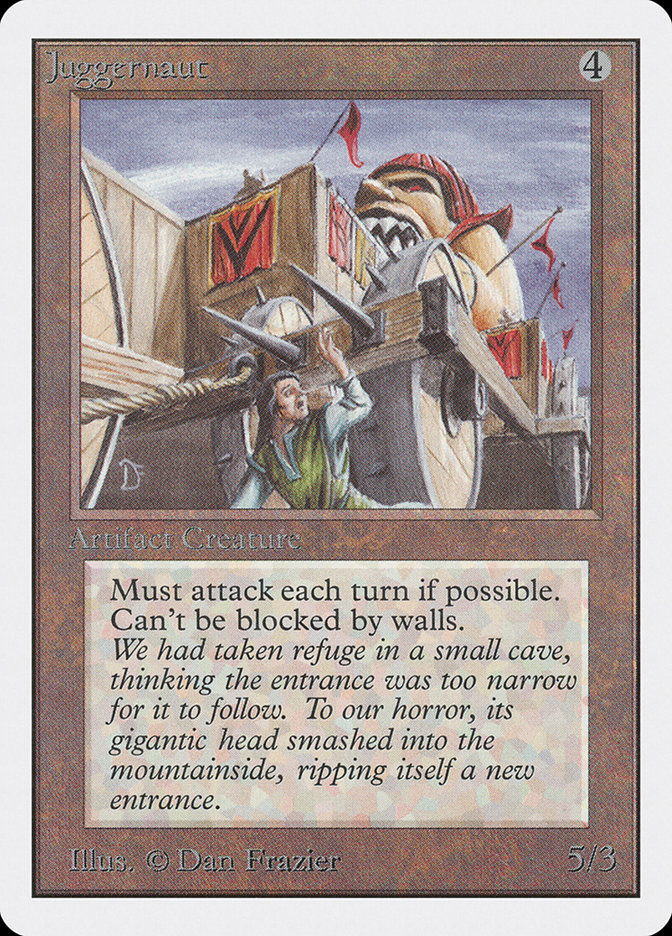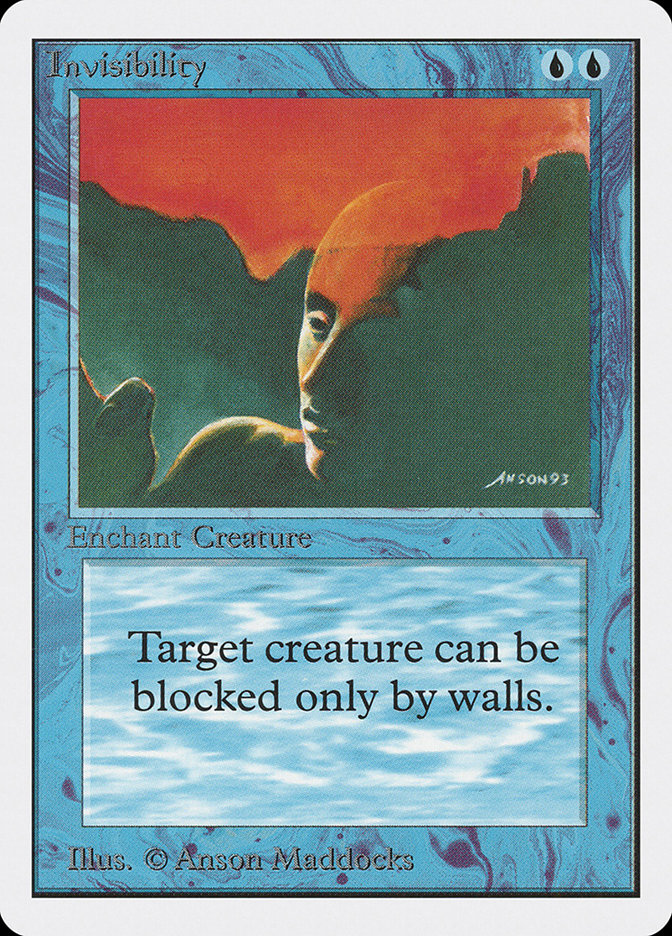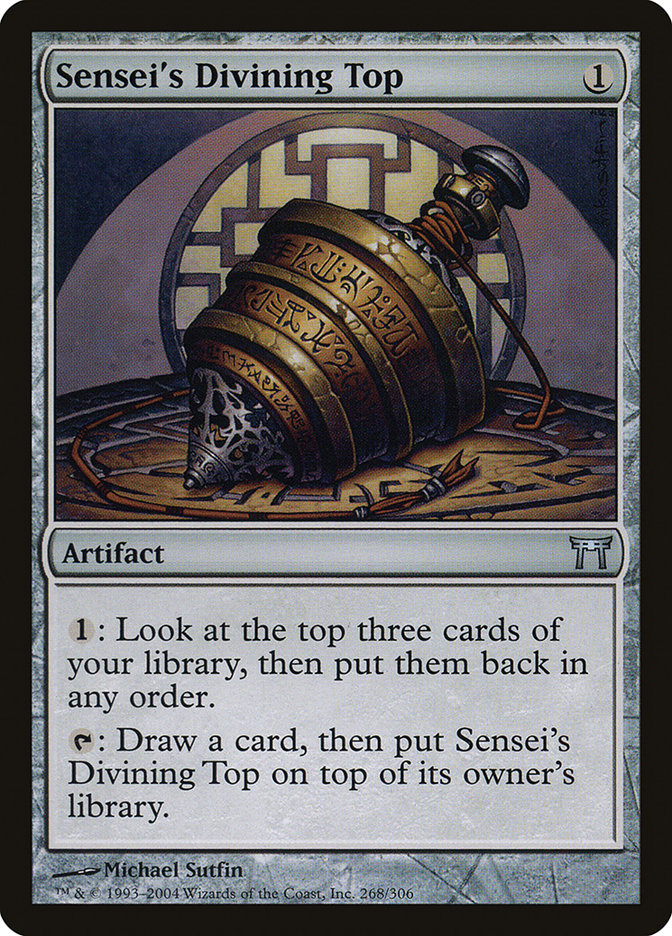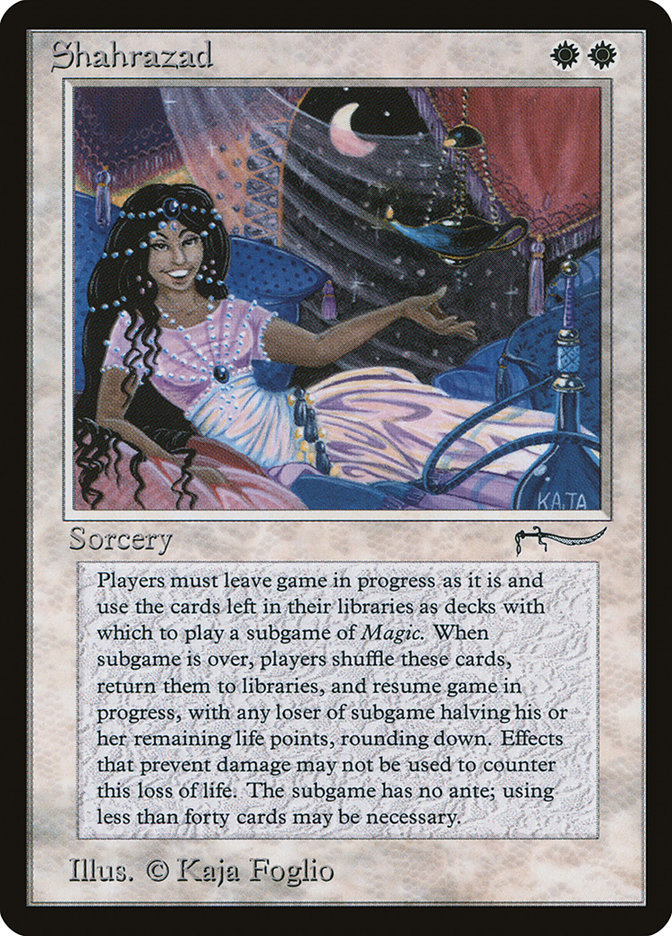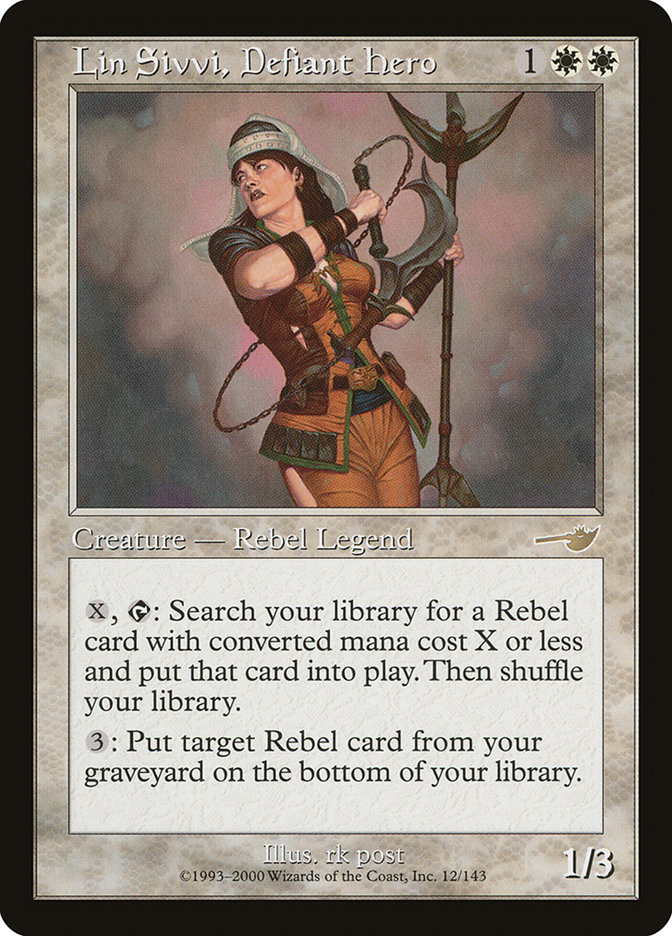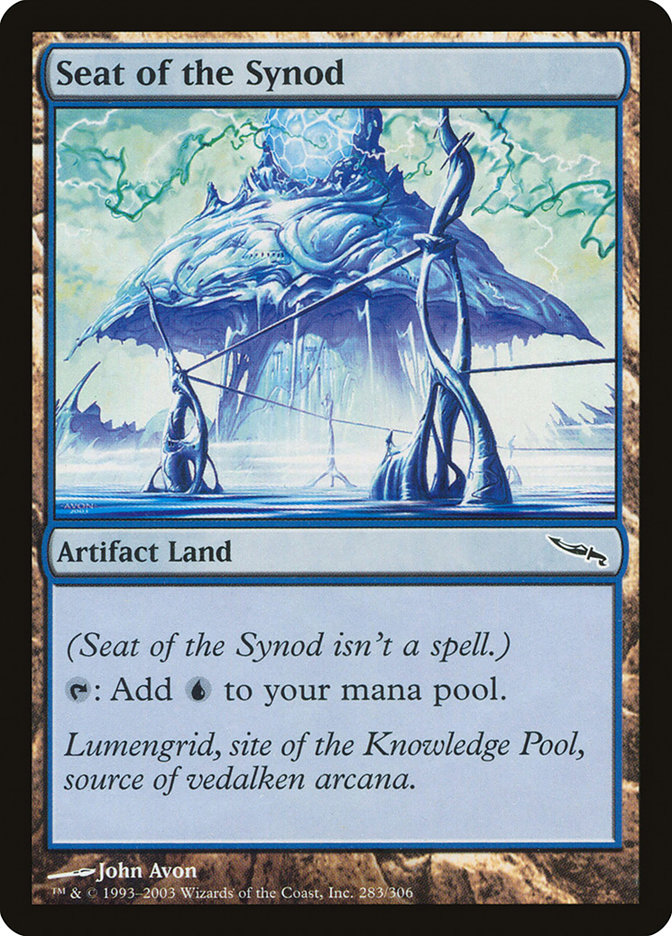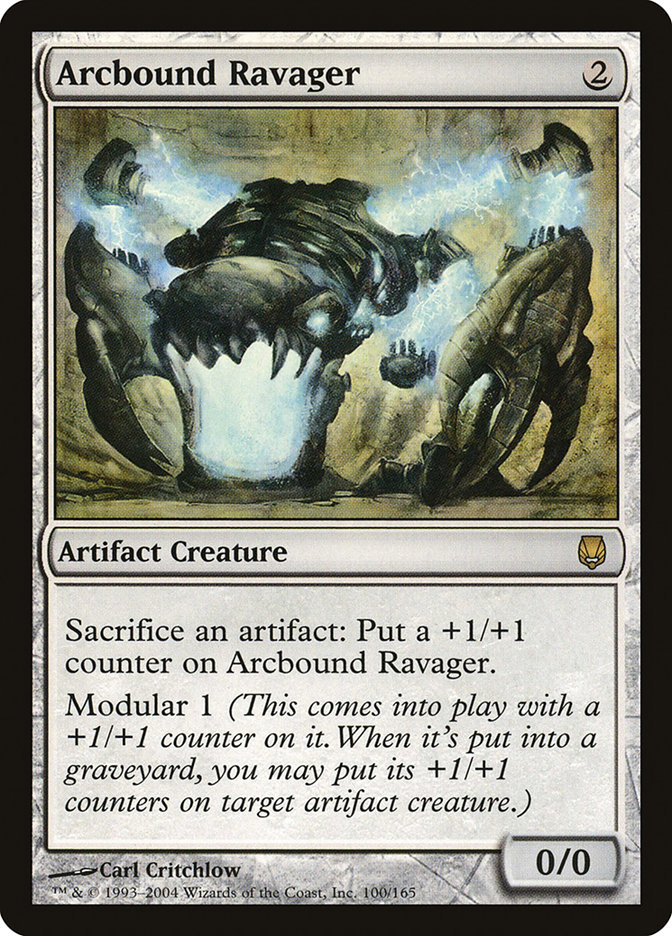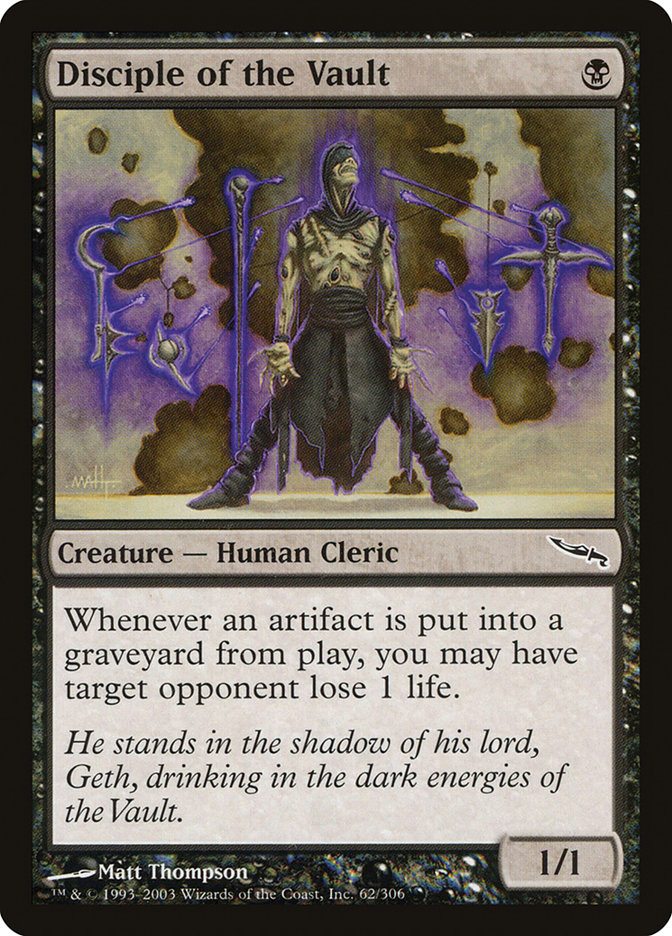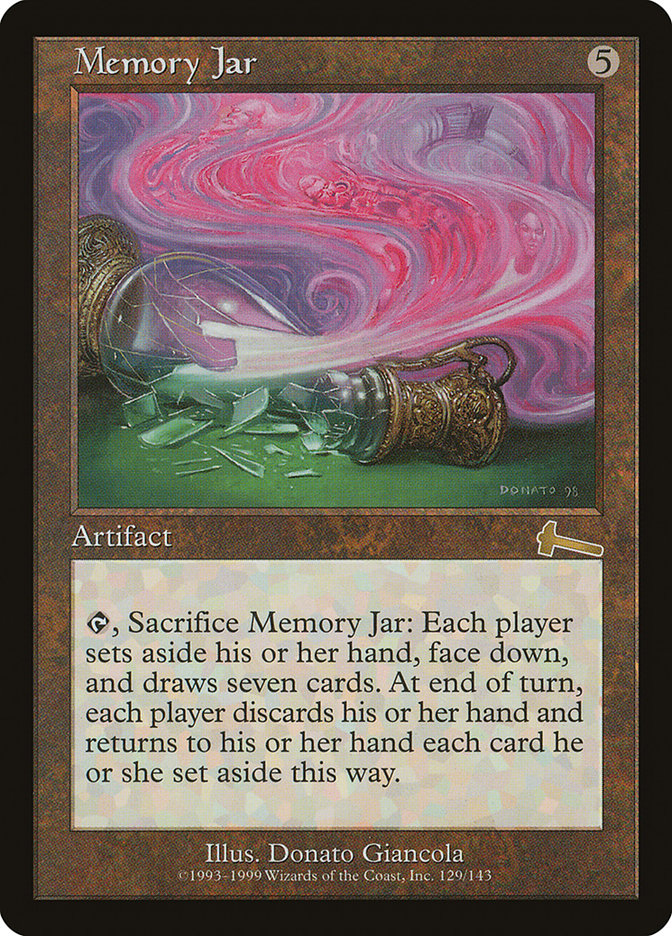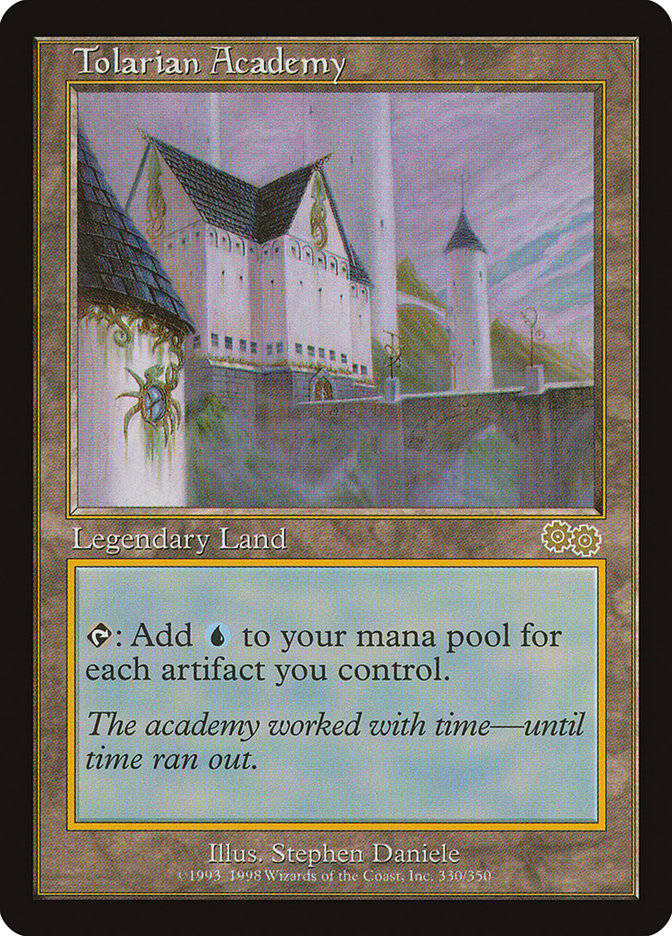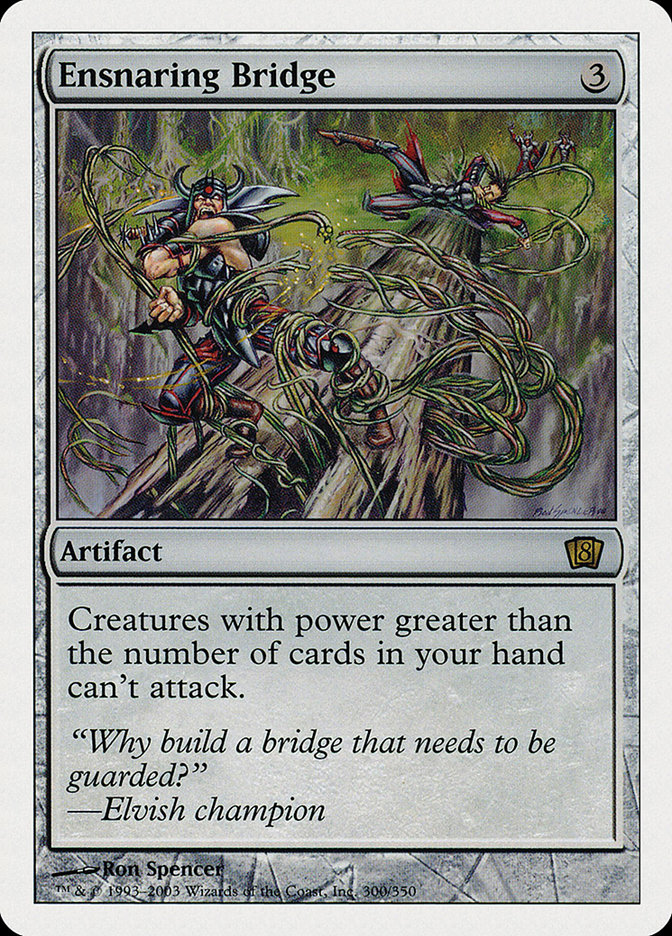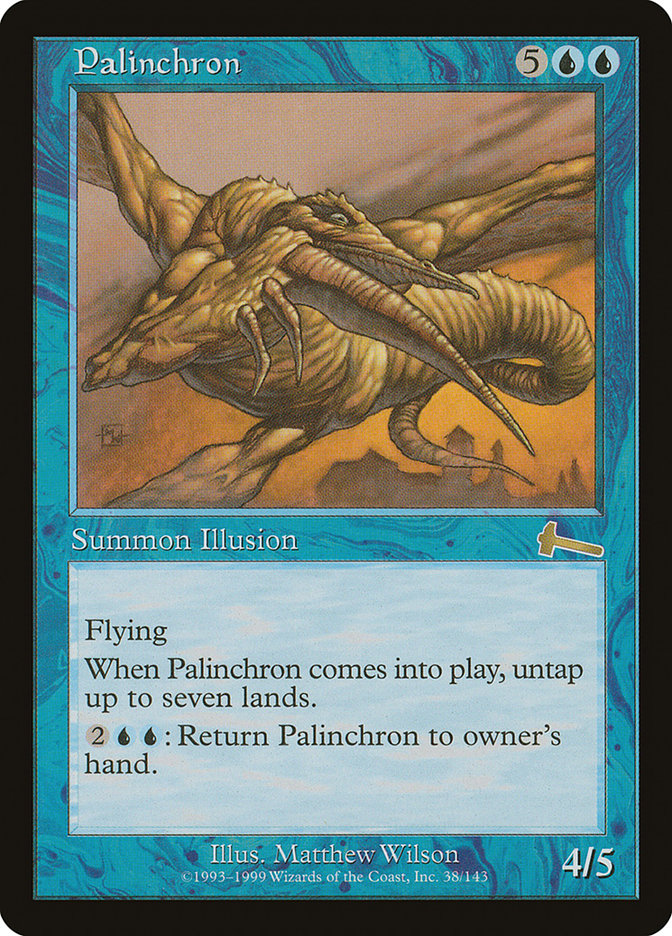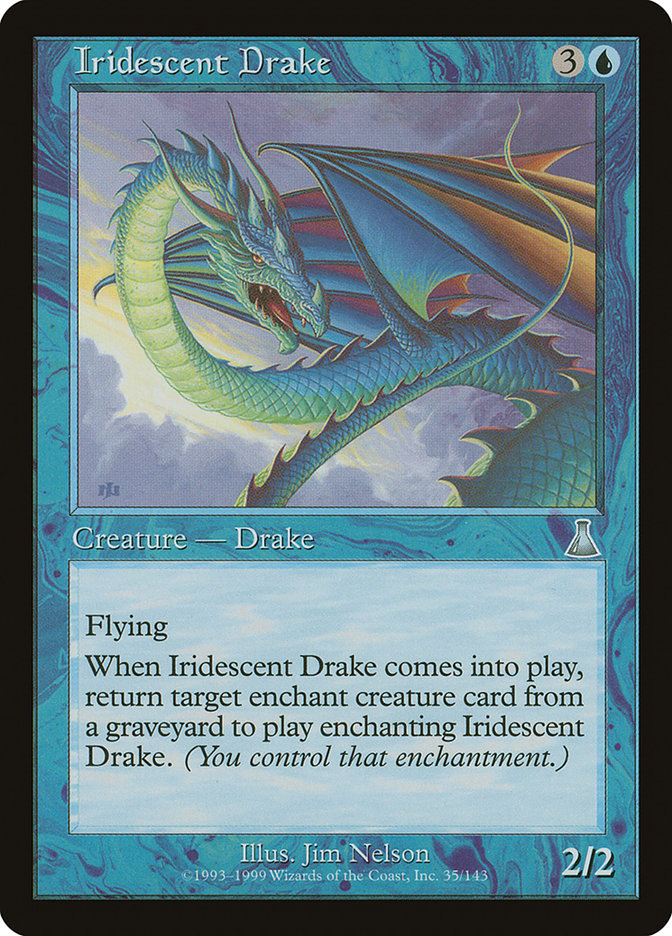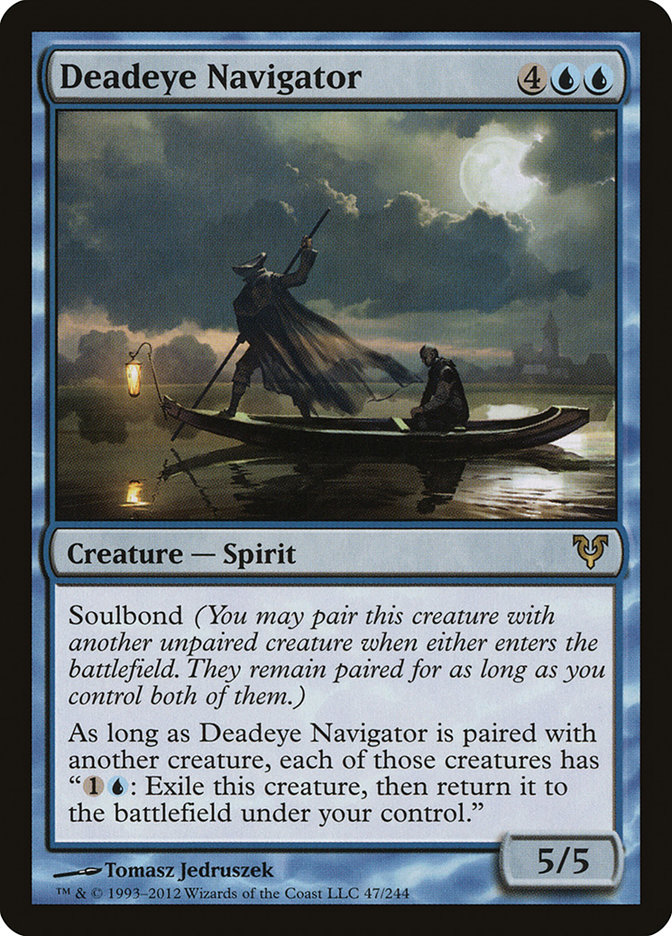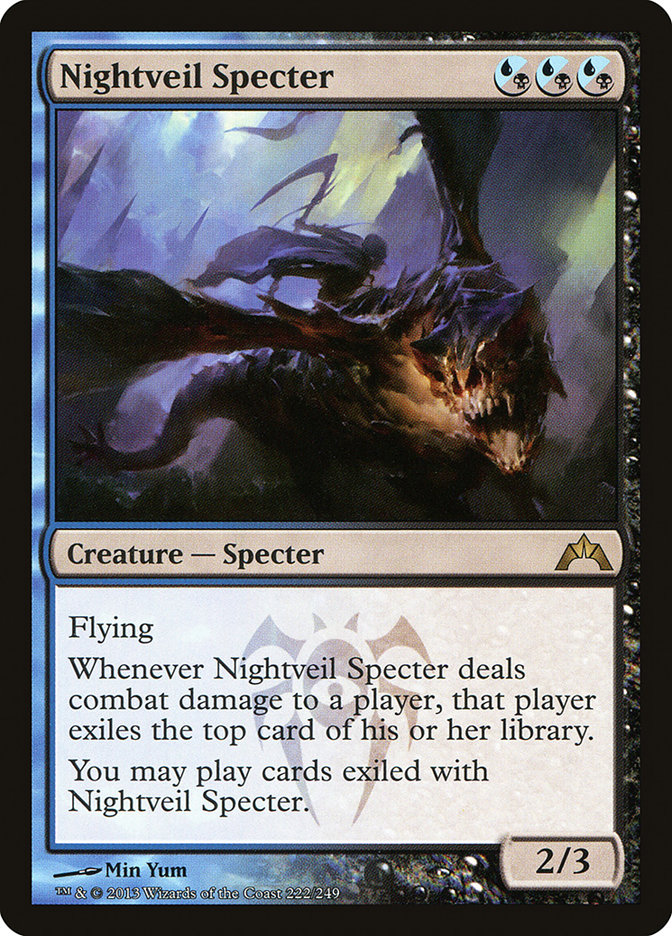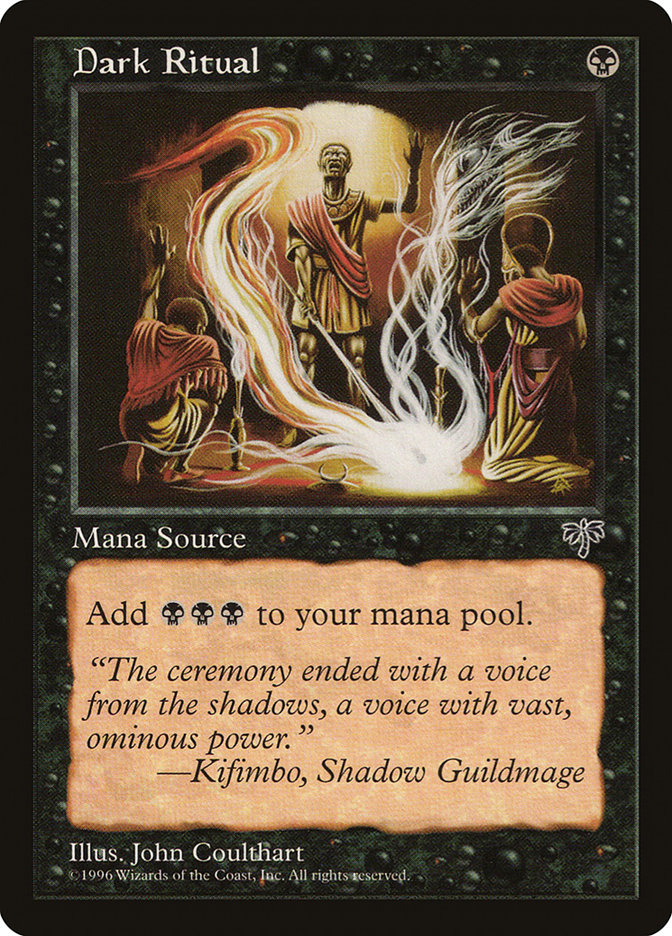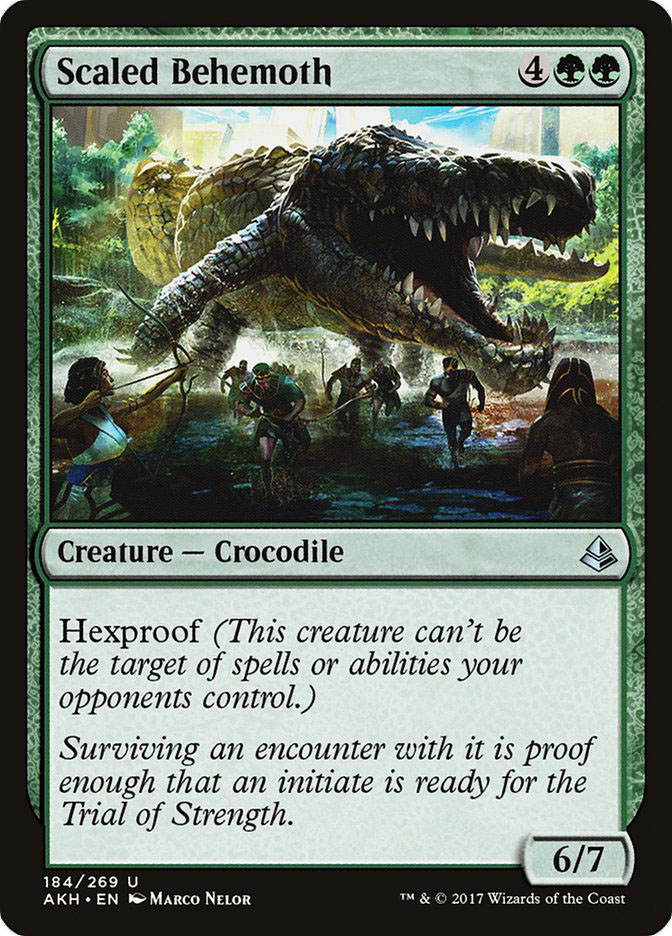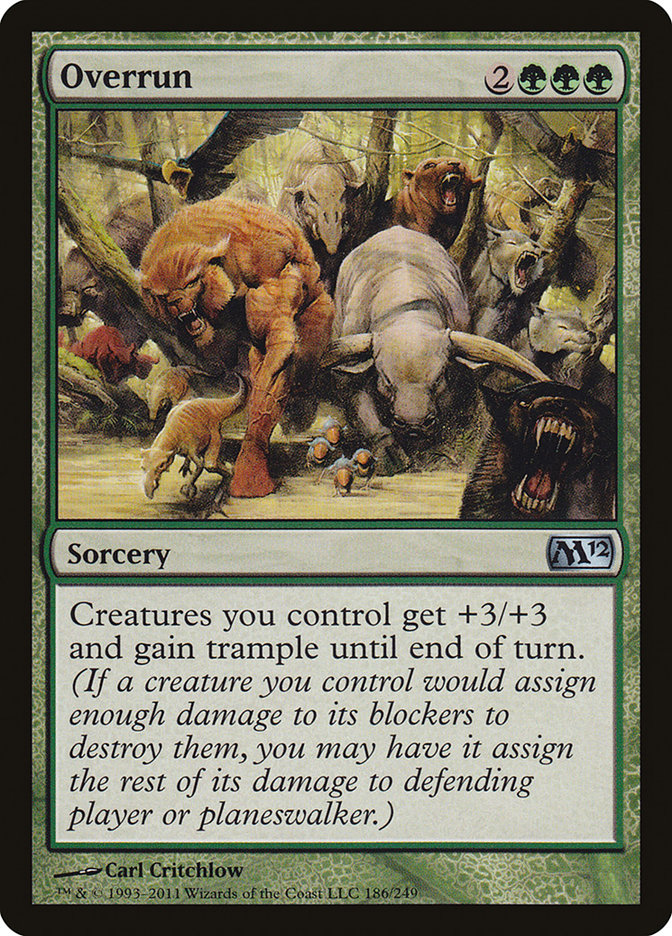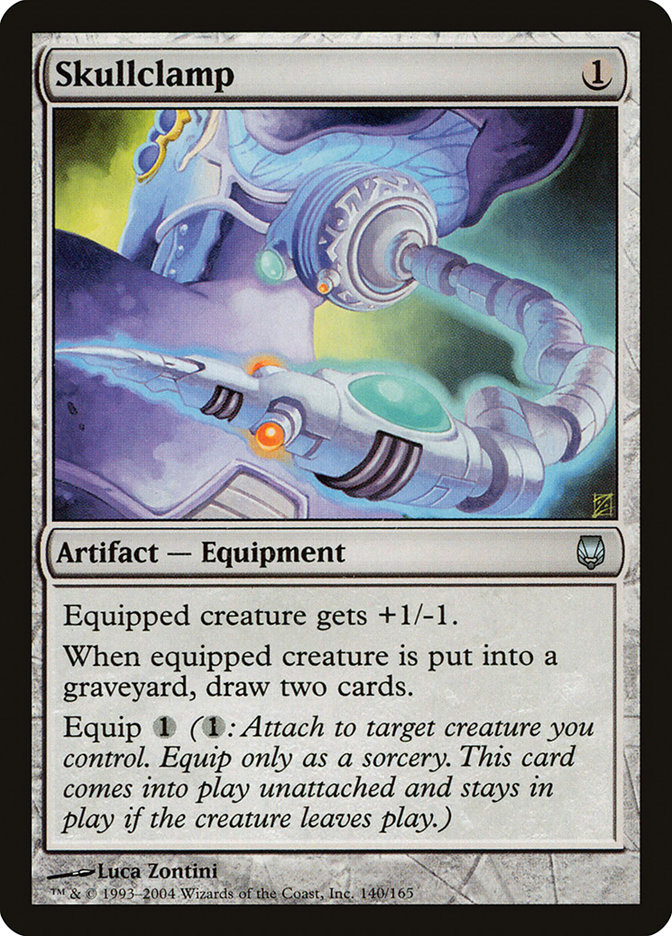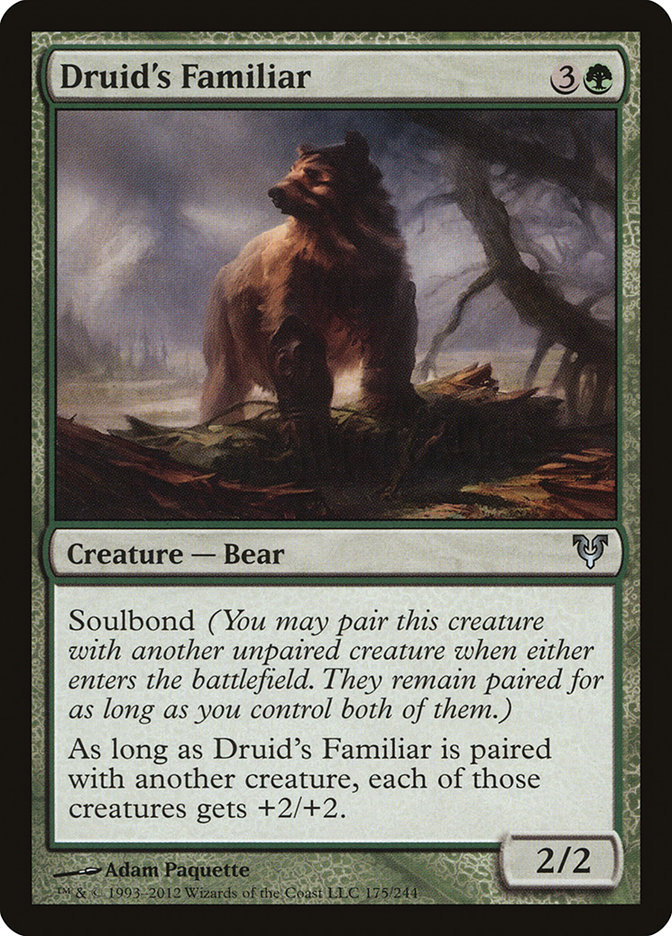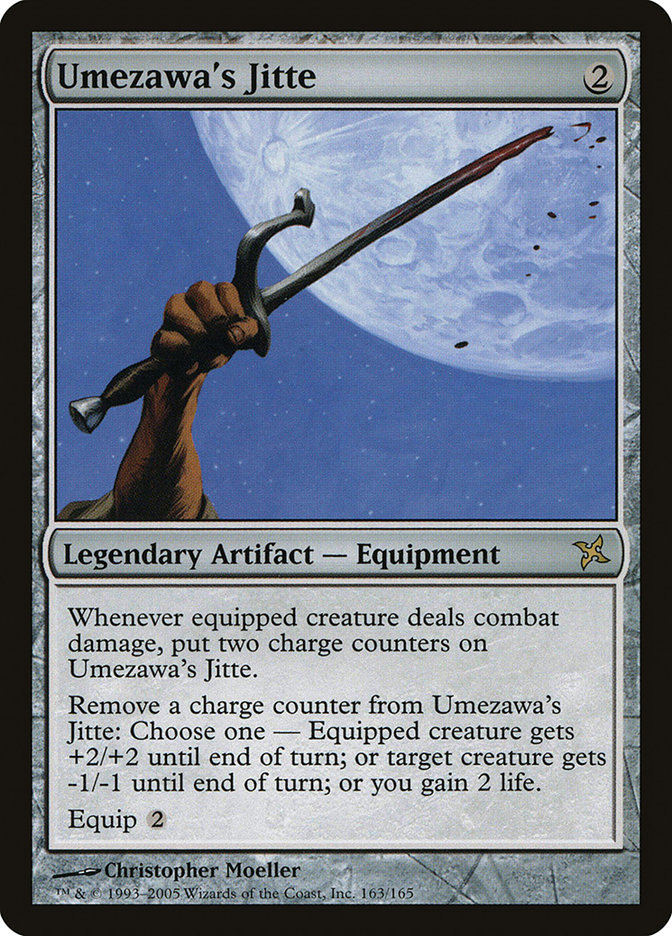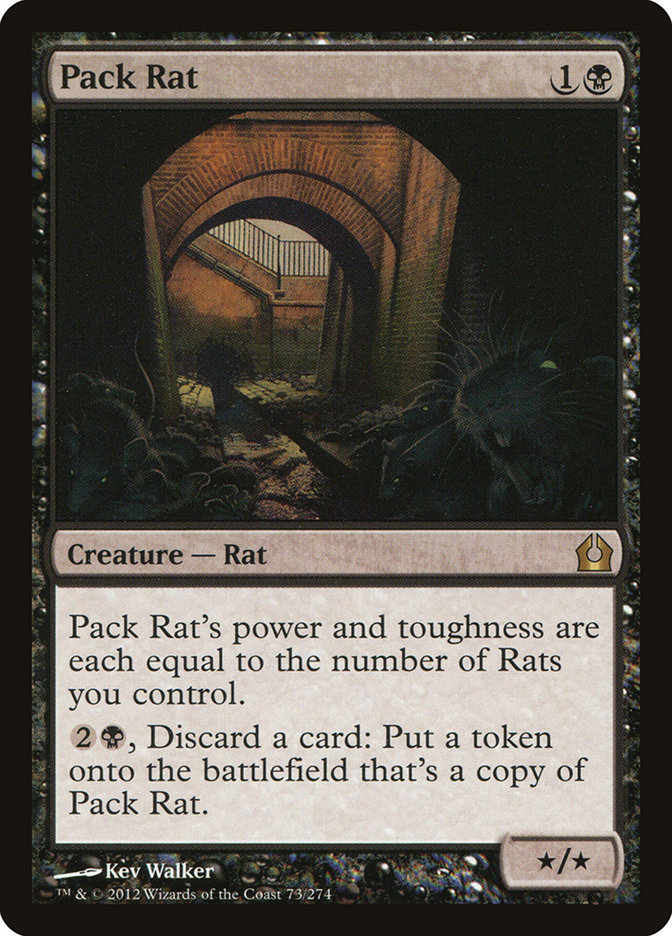When creating content is your thing, it’s important to know what your niche is. You read Brad Nelson and Gerry Thompson for high-level strategy. You read Michael Majors and Sam Black for high-level decklists that are tuned and a little off the beaten path. You read me for lists. Crazy, wacky, sometimes good lists that bring a smile to the face and, if I’m lucky, really make you think.
Most weeks I will try to bring you at least a couple of lists to make sure you keep coming back. After all, I am not a Pro Tour player and I never will be. I prefer to follow the advice of Lavar Ball and stay in my lane. This week I am going to provide as many lists as I can jam in one article without our cruel taskmaster friendly loving editor cursing my name repeatedly for turning in a monster of an article. You want lists? I got your lists.
Top 8 Cards That Got Banned
Let’s start with a very pertinent list in the light of this week’s upcoming announcement. With people expecting a ban in Standard, whether that’s Aetherworks Marvel or Ulamog, the Ceaseless Hunger, it seems like a reasonable time to discuss my Top 8 bannings of all time.
8. Juggernaut
The clue is in the name: the card is unstoppable. The rationale behind banning this one, however, is the reason for including it at number eight on the list. In all seriousness, the DCI cited the combo with Invisibility as a problem because it would make Juggernaut unblockable.
Constructed powerhouse, denied by bannings.
Bear in mind that this was when Lightning Bolt and Incinerate were both legal cards to play in all formats. Apparently that’s not enough to prevent this puissant pairing from practically pulverizing people. Ah, the good old days.
I came back to Magic after a long hiatus in late 2010, after the release of Scars of Mirrodin. It would not take long for me to grow sick of the sight of the greatest planeswalker ever printed. As more cards were added to that Standard format and the price of the ubiquitous little twit went higher and higher, I hated it more and more. The fact that Oblivion Ring was not in the format and there were no good haste creatures around made it even harder to deal with, to the point where eventually Wizards acted and banned both it and the mostly innocent Stoneforge Mystic. As you will see later on, the format was not entirely saved, but at least the entry barrier was lowered significantly.
It’s not often that we get to rejoice the banning of a card on two separate occasions, but Sensei’s Divining Top has earned that honor. Apart from having the dubious distinction of causing the only Pro Tour in history with 60-minute rounds (and still a bunch of draws…), the ol’ Top was on the initial Modern banned list. Some might want to say it was because Counterbalance is also Modern-legal and that combo might be too good, but we all know that it was really banned because we judges like tournaments to end at some point.
Much rejoicing was also heard around the world when the trigger was finally pulled on the card in Legacy, ending the reign of terror of the Miracles deck (or at least weakening it; we will find out more this weekend) and putting a dent in several other strong Legacy decks that played Top because hey, basically free, right? The hoops through which one must jump in order to destroy the card are numerous, and the time people take in activating it two or three times per turn is now liberated to make Legacy events more watchable.
5. Shahrazad
Quick trivia for you: Shahrazad was the first non-ante card to be banned in the history of the game. The obvious reason is that the card is ridiculous, but there are several not-so-obvious reasons as well. For example, see the aforementioned point about liking it when tournaments end. If four people in a 400-player tournament are playing Shahrazad, that’s four matches that could have four subgames per game in the match. Not to mention sub-subgames, and…no. Stop. Go away. There’s also the massive logistics issue of where exactly we put the subgames, keeping in mind we not only need to leave the main game intact but we also need to let other people keep playing their matches. Space is often at a premium and letting one player take up three tables at a time is probably not going to help in that regard.
Looking at Lin Sivvi with no knowledge of the rest of the environment in which she ran roughshod would probably lead to two thoughts. One, how much more obvious could they have made the Xena, Warrior Princess parallels without getting sued? Two, why on earth did this need to be banned? A 1/3 for three that searches up Rebels and recurs them; how could can that be?
History time, friends. The Masques block came on the heels of the uber-broken Urza’s Saga block, which contained so many bannable cards that the entirety of R&D was called into the office of the President and verbally torn a new one. As a result the block was significantly powered down and had little in the way of powerhouse cards. One of the big themes in the block was the concept of Rebels and Mercenaries, two competing tribes that had similar mechanics enabling the cards to tutor for others of the same creature type. Mercenaries went down the curve and were focused in black, while Rebels went up the curve.
As is often the case when R&D tries to print similar but different cards or cycles in different colors, one of these is significantly better than the other. Combine the ability to go up the curve with Lin Sivvi’s ability to scale her tutoring with your land drops, and we begin to see how powerful she can be. The Rebel deck already played like a white weenie strategy, and giving it both uncounterable tutoring and recursion is dangerous to say the least.
But wait, there’s more! The way the “legend rule” worked at this point meant that the first person to cast a Lin Sivvi would strand any copies be in the opponent’s hand. Now, doesn’t that sound like it makes for a fun, interactive game of Magic?
3. The great Affinity nerf
I considered putting this is a separate entry for each card, but that’s a little too much even for me. When the Affinity deck was running rampant over tournaments left, right and center, there was a real danger of tournament Magic dying out. Attendance was really suffering, complaints were high, and events just were not fun. Comments about the deck being pilotable by a ham sandwich were heard, even on commentary. It’s fair to say that mistakes were made with the printing of Arcbound Ravager and the artifact lands.
So what was the answer? There were cards seeded within Mirrodin block that in theory should have kept the deck in check, but Oxidize and Shatter being both cheap and effective was still nowhere near enough. Kataki, War’s Wage was coming soon, but they couldn’t wait that long to take action. Decks could win as early as turn 4 and were nigh impossible to disrupt with the cards in the format. Disciple of the Vault, another example of a pair of similarly-designed cards gone awry (remember how much play Leonin Elder saw? Yeah…), was a huge part of that. The solution, then? Ban it all.
Yes, Wizards of the Coast banned eight cards from the deck, seven of which were commons. It was the single biggest banning of all time and all of them were arguably needed to kill the deck and save tournament Magic. And believe it or not, that isn’t hyperbole. Were it not for the huge impact of the top two entries, this would easily be number one.
2. Memory Jar
I went back and forth between this and the top entry for a while, eventually settling on this order because the reason that Memory Jar was so good is less obvious. However, it remains the only non-Conspiracy card that was technically banned before it became legal, and was the first card to be emergency banned/retroactively added to the list. Printed as it was in Urza’s Legacy when both Dark Ritual and cheap artifact mana were legal (and plentiful, in the case of artifact mana), it was not hard to get a Memory Jar on to the battlefield on turn 2 or 3, having already resolved a Megrim. From there you could easily play some of the fresh seven cards you drew, with the help of cards like Yawgmoth’s Will and pre-errata Lion’s Eye Diamond and possibly including a second Megrim. Then the end of the turn would roll around and your opponent would end up discarding a bunch of cards, probably dying in the process. Randy Buehler and Erik Lauer took this concoction to GP Vienna in 1999 and promptly wrecked faces, leading to the ban.
This may be due to some personal experience bias on my part, as I both played with and against the infamous Academy deck, but no card needed to be banned as badly as this one. We’ve already discussed the fast mana available in the format, most of which came from artifacts. Okay, that’s pretty good with Tolarian Academy, but then your hand is empty. Well, you see, there was also this card called Windfall which drew you seven more cards. Seems strong. Then, of course, we got to cast Time Spiral or Frantic Search to untap our lands (including Tolarian Academy, which is now making about six mana) and do it all again. Then we find Mind Over Matter and turn every card into another activation of Tolarian Academy, which in turn fuels a medium Stroke of Genius, which then makes more mana with Academy to fuel a lethal Stroke of Genius. Sound good? Okay, sure, how about if we do it on turn 2? Yeah.
Top 8 Cards That Should Have Been Banned
Not every busted card incurs the wrath of R&D to the point where it is deemed illegal. Sometimes that’s perfectly reasonable and people just need to try and adapt to what’s winning. Other times it’s arguably a mistake that damaged the relevant metagame and in turn, tournament attendance. Let’s look at some of those examples.
8. Ensnaring Bridge (Modern)
Remember when I said that people want tournaments to end at some point? Ensnaring Bridge is an egregious example of a card that does its best to prevent that happening. Now, sometimes that happens in decks like 8-Rack that have other ways to end the game in a reasonable time. That deck is not as common as the main time thief in Modern events these days: Lantern Control. Ensnaring Bridge breaks some fundamental rules of Magic when it comes to what R&D has shown they want tournaments to be, in that it forces one person to not play Magic. This is easily the least bad of the eight choices I have in this list, but it is pretty darn annoying to face.
7. Palinchron, Iridescent Drake et al. (old Type 2/Standard)
Here’s another fun blast from the past. Great Whale, Palinchron, Cloud of Faeries, Treachery, Karmic Guide, and Iridescent Drake all received power-level errata to prevent their enters-the-battlefield ability from triggering unless they were cast from hand. At the time it was considered preferable to allow people to continue playing with cards than to fundamentally change what they did by changing their wording. That the errata has since been undone is perhaps proof (albeit in hindsight) that the cards should have just been banned, as most of them never saw play after the errata.
6. Deadeye Navigator (Commander)
How this card continues to escape the banhammer is a constant mystery to me. One of my judge mentors is a member of the EDH Rules Committee and I beg him every now and then to make this move, but he insists that the card itself is fine and people just need to either play it fairly or their opponents need to play more spot removal. While that might be true, Navigator works so well with so many cards (and arguably breaks a few, like Sylvan Primordial…which is banned) that it’s almost impossible to avoid playing it unfairly.
5. Primeval Titan (New Phyrexia Standard and Innistrad Standard)
When Jace, the Mind Sculptor and Stoneforge Mystic bit the dust in Standard, many thought that the format would be opened up to more archeypes. Yeah, sadl,y not so much. Valakut, the Molten Pinnacle was handily the second-best deck during CawBlade’s reign of airborne terror, and in fact contributed to the dominance of that deck by making aggressive strategies all but unplayable. With CawBlade gone, Valakut rose to prominence. When the Zendikar block rotated, we saw less of the big green giant, but the printing of Kessig Wolf Run gave us another suite of dominant strategies in the Wolf Run Blue, Wolf Run Black, and even Wolf Run White decks. Turns out that when a land can become your win condition, you have a powerful deck. When you can find that land while also adding a six-mana 6/6 trampler to the battlefield, you’re not in a bad spot.
4. Delver of Secrets (Innistrad Standard)
Somewhere along the line, someone convinced R&D that a one-mana 3/2 flier was a reasonable card to print. That someone was sorely mistaken. The idea was that the deckbuilding cost of having to include a high ratio of spells in your deck would mitigate the power of the card, but somehow they missed the fact that this was being done when Ponder, Preordain, Vapor Snag and Mana Leak were all legal in Standard. Runechanter’s Pike and Geist of Saint Traft did nothing to make the deck worse. Gerry Thompson made an absolute killing at early SCG Opens by simply showing up with a tuned version of the U/W Delver deck each week, and the format was pretty miserable for a while as a result.
3. Nightveil Specter (Theros Standard)
Most people will remember (likely with an involuntary shudder) the two-and-a-half deck format that was Theros Standard. Black Devotion, Blue Devotion, and occasionally U/W Control or R/G Monsters were the only viable choices, and the first two were so far ahead of the latter two that it made for some miserable events. Nobody likes having their hand and the top of their deck ripped to shreds, or losing to a collection of draft chaff plus Thassa, God of the Sea. The only card that blue and black devotion had in common was Nightveil Specter, and banning it would definitely have made each of those decks less powerful. Would it have been enough? We’ll never know now, sadly. It certainly wouldn’t have hurt, and those three symbols towards devotion in either deck might just have turned the tide.
2. Collected Company (Shadows over Innistrad Standard)
From familiarity bias to recency bias, the Bant Company decks of the Shadows over Innistrad Standard season were the perfect trifecta of ban-worthiness: oppressive, ubiquitous, and frustrating. Paying four mana for (most often) six mana’s worth of creatures would be good normally, but it’s even better as an instant. Combine that with the powerful and tempo-oriented creatures available to the deck (Spell Queller, Reflector Mage, Duskwatch Recruiter, and Nissa, Vastwood Seer) and you have a recipe for a deck that made opponents want to bang their head off the table. As much as I enjoyed using Collected Company to do other things at the time (and still do…), none of them were anywhere near as good as the Bant version.
1. Dark Ritual (any time before it actually got banned)
I recently recorded a podcast with the fine folks over at The Mana Pool about the history of bannings (you can find Part 1 here). While going over the early days of cards being banned, one theme became abundantly clear: “It’s broken on turn 1 with a Dark Ritual” was a common cry. Not only did Dark Ritual not get banned in Standard or Extended while cards like Hypnotic Specter, Necropotence, Hymn to Tourach, and more were getting the axe…they kept reprinting it until Mercadian Masques somehow. It became a running joke on the episode and remains a joke to me that a card which is clearly busted in half should not only stay legal but stay Standard-legal for so long.
Top 8 Cards That Should Have Been Banned in Limited
There has never been a Limited ban in the history of the format(s), but a few cards maybe should have been. At least some of these must have come close. I have excluded mythics because of their scarcity, and there are only two rares on the list for the same reason. Drana, Kalastria Bloodchief and Citadel Siege were excluded under this rule. Elite Scaleguard would have been number nine.
8. Scaled Behemoth (Amonkhet)
Giant monsters with hexproof are generally very hard to deal with. Generally formats that contain them will have some mitigating factors: plentiful deathtouch, a high cost in a fast format, multiple sacrifice effects. Amonkhet has one common and one uncommon with deathtouch, and one sacrifice effect below mythic rare. Scaled Behemoth is also not hard to cast in the format unless you get blitzed by the fastest of the aggressive strategies.
7.Vampire Nighthawk (Zendikar)
So low on the list because it was more a lifesaver than anything else, Vampire Nighthawk was nonetheless as close to unbeatable as they come for a three-mana uncommon. It’s aggressively costed in any format, but the fact that most of the best creatures in the format had two power and most of the common removal could not hit Nighthawk made it a true nightmare for aggro decks…even without the lifelink. Oh, did we mention that most decks were aggressive in Zendikar?
6. Overrun (any set)
Not much needs to be said about this card. It’s been discontinued in recent years, replaced by far less powerful variants at a higher rarity, but this used to be a green uncommon staple that essentially said “2GGG: if you control four or more creatures, you win the game now, or maybe next turn.” All you needed to do was maintain a battlefield presence until you could cast Overrun, and then your opponent lost their entire team. The addition of trample made the card almost egregious, especially if you had any deathtouch creatures. The demanding mana cost and the need to have a substantial number of creatures keep this one down.
5. Skullclamp (Darksteel)
It reduces toughness; how bad can it be? Uhhh, really bad. A card so powerful that it’s still banned in Legacy, Skullclamp was a terror in Mirrodin/Darksteel draft. Cashing in a Myr for two cards once you no longer needed the mana was possibly the least-offensive thing this card could do, and that was plenty powerful. And to think this all happened because of a last-minute change to the stats.
4. Druid’s Familiar (Avacyn Restored)
A four-mana 2/2 surely can’t be good, can it? No, it can’t. You’re quite right. Druid’s Familiar was almost never a 2/2, however. It was a 6/6. For four. And two of that six power effectively had haste. If you were able to pair it with a Silverblade Paladin or even a Wingcrafter, your opponent was probably very, very dead. Removal in Avacyn Restored was miserable because R&D wanted soulbond to shine, and shine it did…so brightly it made for a dazzlingly bad format.
3. Invisible Stalker (Innistrad)
Like many of the cards on this list, Invisible Stalker looks pretty innocuous to the uninitiated. It’s unblockable and hexproof, but so what? It’s a 1/1. Generally yes, that would be an almost unplayable card. The problem was that Innistrad had two (arguably three, if you include Spectral Flight) cards that made Invisible Stalker an absolute nightmare and all but unbeatable. Silver-Inlaid Dagger was bad enough, making a 4/1 unblockable on turn 3 with no hope of beating it with a blocker and only a slim hope of winning the race. Butcher’s Cleaver took even that slim hope away, giving the same power boost but adding in lifelink, in case you wanted a headbutt with your gut punch. Mark Rosewater has admitted that this card has at least two design mistakes, one of which is the flavor fail of an invisible person carrying around a cleaver and still being invisible. Can’t argue there!
2. Umezawa’s Jitte (Betrayers of Kamigawa)
The original “groan test” card. Jitte is so good that many of you, especially any readers who played that Limited format, are already formulating a vitriolic comment to disagree with me (you’ve probably guessed the number one card, in that case). It might be because I never played the format, but I think I am justified in relegating Jitte to a close second. Do not for one moment think I am saying that the card wasn’t busted as all heck and immensely unfun to see across the battlefield, however. All you needed was to have one creature deal combat damage once while equipped with Jitte, and you immediately had a near-insurmountable advantage in every combat step from then on. Every ability on the card is relevant, and the fact it is an artifact and thus playable in everything made for a very sad time if you weren’t the one who opened it.
1. Pack Rat (Return to Ravnica)
It could be nothing else. It didn’t look like much at first, but once people started to figure out that virtually no card in your deck was better than “2B: Make another Pack Rat,” the jig was up. As good as Jitte is, Pack Rat could win the game on its own, without a single other spell being cast. Nothing your opponent did was likely to matter, unless you were very bad or they had one of the four (three of which were rare) cards that could answer it in Return to Ravnica: Pithing Needle, Supreme Verdict, Detention Sphere, and Street Spasm. Stories of mythical Sealed pools with triple Pack Rat were the stuff of nightmares but were also unsubstantiated. What was documented fact was that one person (at least) was able to receive a full refund on an MTGO draft for the sole reason that their opponent had a Pack Rat. Like I said…it could be nothing else.
List We Forget
I hope you enjoyed a slightly different type of list from me this week. Sometimes we need a break from the tedium of Aetherworks Marvel and Death’s Shadow, and as one of those is likely to change in a few days, I figured we could have some fun.
That’s all we have for this week, folks. As always, thanks for stopping by. As you read this, I am probably packing for my trip to Las Vegas, so if you are going to any of the events, please do come say hi. Until next time…Brew On!


